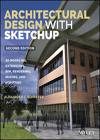The Third Law isn’t nearly as universal as the first two, but it does suggest some possibilities. One thinks, for example, of the magnificent railroad stations that were built as late as the 1930s in far-flung American cities like Buffalo and Cincinnati, just as rail was, you’d think predictably, about to give way to the car and the plane. Or think of the imperial architecture of Britain, in London and New Delhi, as the Empire began to weaken in the early years of the 20th century.

Or to come closer to the present, it’s interesting to someone who, like me, dabbles in journalism to notice that at least three monuments to that profession have recently arisen in the U.S., at the very moment when we’re all abuzz with predictions of the forthcoming demise of the newspaper and the radical reconstruction of other forms of journalism.
The three are the Newseum in Washington, right across the mall from the Capitol, by Polshek Partnership; the New York Times tower in Manhattan, by Renzo Piano; and the Hearst Tower a few blocks away, by Foster and Partners.
I like the Times building and dislike the Hearst, but they’re both, certainly, signature works of architecture you could accuse of expressing our civilization “most pretentiously,” especially given that both the Times and Hearst’s San Francisco Chronicle are deep in debt. As for the Newseum, I’m not sure it would have occurred to anyone to build a museum of journalism when newspapers were still hot stuff. When a culture is thriving, it’s too busy to build monuments because it’s having too much creative fun doing whatever made it a culture in the first place. It’s when things start to slide that you get the backward look.
I don’t want to press this point too hard, but I’ll throw out one more suggestion. Much of the world has been building art museums in recent decades with a passion that rivals the cathedrals of the Middle Ages in Europe. Yet I think it’s entirely fair to say that there has never been a time when people were less certain of what constitutes good art, or less sure whether any such thing is actually being produced today. Are we asking our museums to be themselves works of art because we lack confidence in the quality of the things inside?
Essayists are allowed to follow their thoughts wherever they lead, so let me change the subject. I mentioned the Alhambra as a favorite building. That raises a whole other question, probably unresolvable, which is how much of our appreciation of a work of architecture depends on the circumstance in which we first saw it.
It was February or early March when I first visited Granada, the air clear and bright. My then wife and I were traveling around Europe on a fellowship from Harvard. We registered at a parador, a beautiful monastery converted into a hotel, on the hill a few steps from the Alhambra. It was late in the day and my wife said she wanted to rest, so I walked over to the Alhambra myself. If my memory isn’t playing a trick, I was the only tourist in the building for the next 45 minutes. As I walked freely around, I was struck by an aspect of the Alhambra which now reminds me of the kind of place envisioned in the 1984 classic Collage City, by Colin Rowe and Fred Koetter. Those authors propose a city in which formal, symmetrical public spaces are placed among what otherwise is an intricate, unpredictable world of narrow lanes and changing levels. The Alhambra is famous for its ornamental detail, but what electrified me was the experience of moving among its spaces, both indoor and out, as they opened out or tightened up. As I did so, the sun was slowly setting, deepening the ambers and pinks of the walls. A light rain, almost a mist, began to fall. Surfaces grew reflective and the water features seemed to connect with a larger life.
I never want to go back, because I know the Alhambra can’t again be that same building. It wasn’t, even, on the following morning. I remember, by way of warning, a disastrous attempt to revisit another loved locus, the Italian village of San Gimignano, some years after my first time there. It was so full of tourists — okay, people like me, I recognize — that it felt like crowding myself into a subway at rush hour. The experience of place was no longer attainable.


